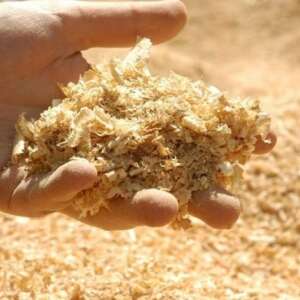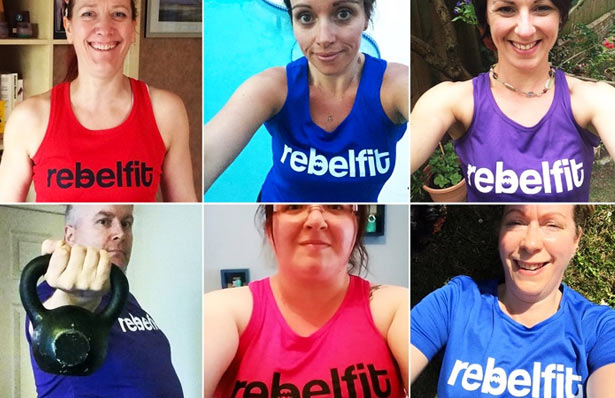
The Only Way To Lose Weight Long Term!
posted on: February 25, 2017. posted in: Weight loss
We've had a question on our fan page...
"How can you lose weight safely and permanently without ruining your body? Is it all about exercise and nothing to do with dieting at all?"
What a fantastic question! And proof that rebels out there are now realising that not all weight loss is good weight loss!
There is weight loss that damages you physically and mentally (dieting), and there is weight loss that improves you physically and mentally (fitness). So here's an explantation of the difference between the two.
Got your thinking caps on?! Good!
Let the rebel education begin 🎓
We've all heard the phrase "Eat Less, Exercise More", right?!
It's been pushed on us from a very young age, and it has become the mantra of anyone who is trying to lose weight and get slimmer.
"You need to eat less, exercise more and burn off that weight!"
There is science in this. Scientists have proven that when you eat less calories than your body burns off, your body then starts burning off its energy reserves to make up for the shortage. Scientists call that shortage a "caloric deficit". It is basically how humans and many other animals are able to survive famine.
So here's a little example to explain how it works.
Take a look at the picture below...
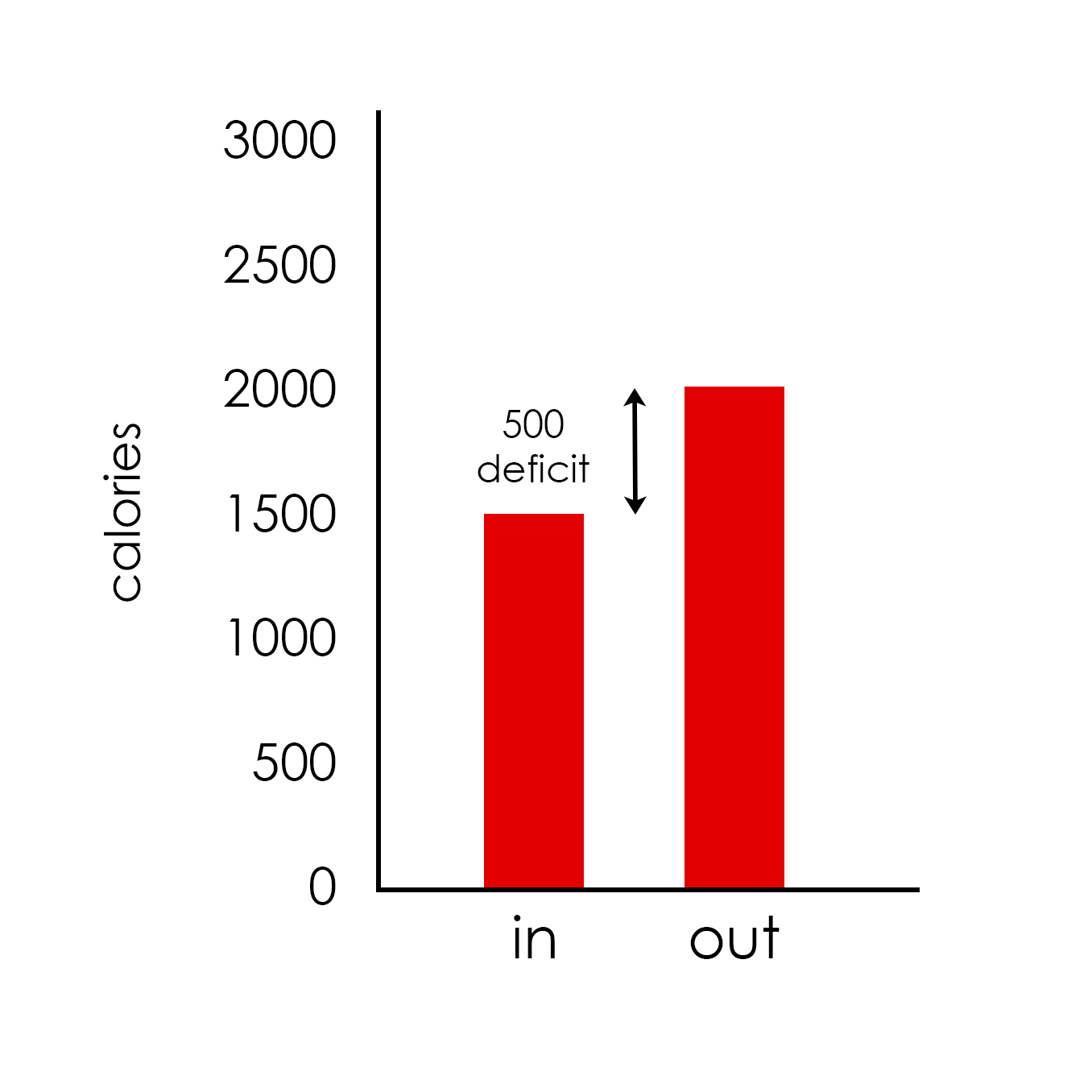 Now what you'll see is a chart for someone eating 1500 calories per day (calories in), whilst burning off 2000 calories a day (calories out). The difference is 500, so scientists would call this "a caloric deficit of 500 calories".
Now what you'll see is a chart for someone eating 1500 calories per day (calories in), whilst burning off 2000 calories a day (calories out). The difference is 500, so scientists would call this "a caloric deficit of 500 calories".
A bit like if you had to spend £2000 in a day but only had £1500 in your account, you would have a shortage of £500. That shortage might come from your savings account.
Well the human body has 3 savings accounts!
SUGAR, FAT and MUSCLE.
Our sugar savings account is called "glycogen", which is stored in our liver and in our muscles. Our fat savings account is called "adipose tissue", which is all those wobbly bits you're trying so hard to get rid of. Our muscle savings account is literally all the muscles of your body, which can be burned off in emergencies.
(think of your muscle savings as a very last resort, maybe like the cash under your mattress!)
So in the example above, the person eating 1500 calories a day but burning off 2000 calories a day would make up the 500 calorie deficit by burning off mostly SUGAR, some FAT, but no muscle, because the deficit is small.
As we burn off sugar, fat and muscle...
We LOSE WEIGHT.
We are literally losing pounds of sugar and water (glycogen), fat tissue, and muscle tissue. Which is what makes the pounds drop on the scales, making us lighter.
Now here's where it gets a little more complicated.
Go make yourself a strong coffee, you'll need it ☕
__________
Not All Weight Loss Is Good Weight Loss!
So now that you understand what a "caloric deficit" is (a shortage of calories), and how creating a caloric deficit by eating less than you burn forces your body to burn off sugar, fat and muscle, resulting in weight loss...
The next thing to learn is that there are 2 main ways to create a caloric deficit!
1. Eat Less, Exercise More
2. Eat More, Exercise More
Confused? It's cool, here are some pictures to help 😃
__________
1. Eat Less Exercise More
You've all probably seen the Channel 4 documentary revealing the science that "diets don't work", and that they actually make you fatter longer term. Well some of the research behind that documentary came from this study of Biggest Losers, who employed the "Eat Less, Exercise More" approach to dramatic effect.
They were living on about 1000 calories a day, whilst burning off up to 6000 calories a day, creating a whopping caloric deficit of 5000 calories!
This is what their chart would have looked like...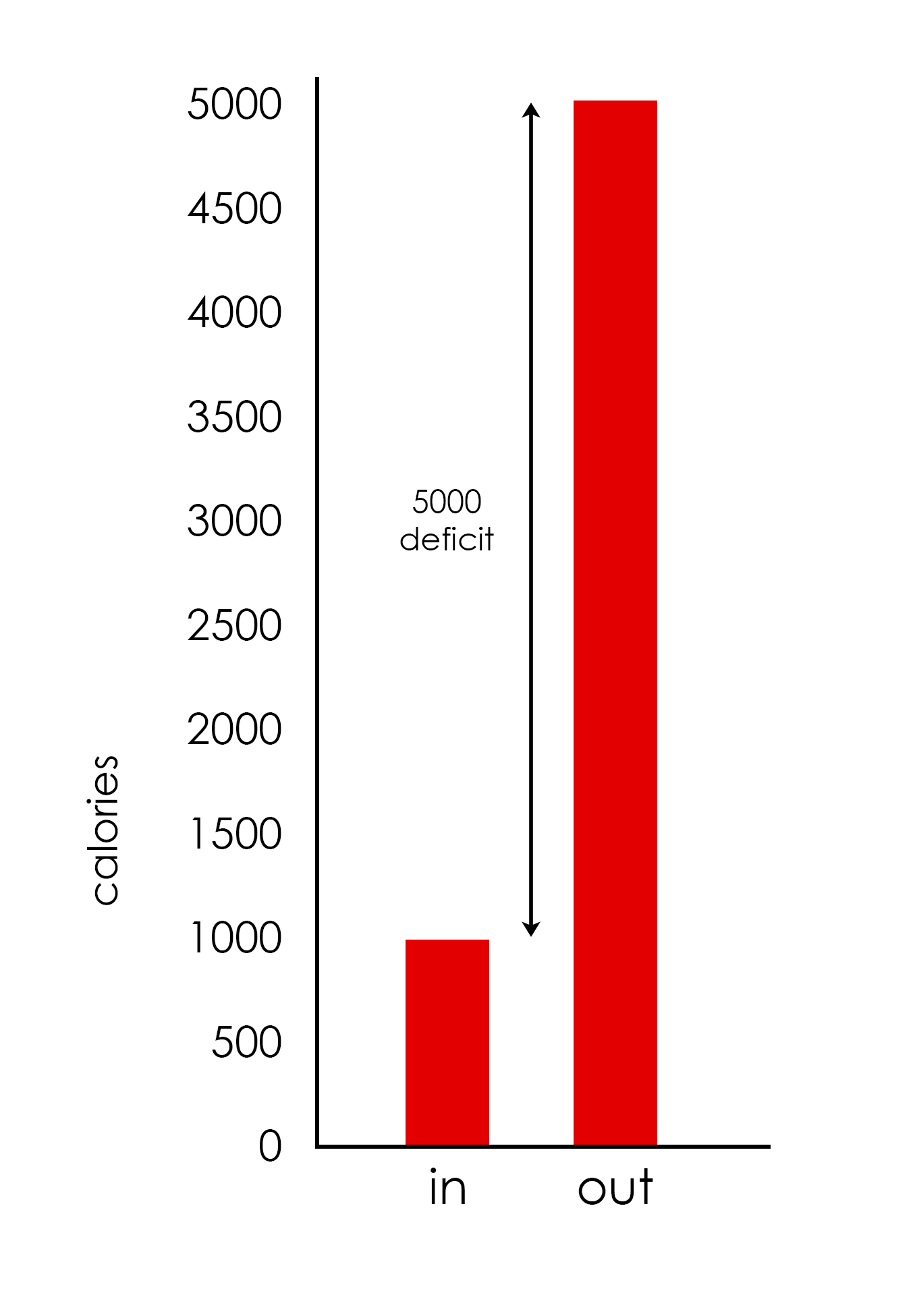 That's a pretty big caloric deficit! Which resulted in unbelievably fast weight loss!
That's a pretty big caloric deficit! Which resulted in unbelievably fast weight loss!
And there's a word for this....
STARVATION.
The body is so short of calories, it very quickly runs out of sugar savings, and it cannot access the fat savings fast enough, so it burns off large amounts of MUSCLE.
Not only does burning off muscle make up for the massive 5000 caloric deficit, but it also does something to help protect the body. Buy reducing the amount of muscle, your body is reducing the amount of calories it needs to fuel itself each day, which slows metabolism.
If the biggest losers started with big engines, requiring lots of calories to fuel themselves each day, by the end of the weight loss challenge, they had lost so much muscle they were left with tiny, slow engines, that only needed very few calories each day.
Add to that the fact that when the human body is starved it alters its hormone balance (ghrelin and leptin levels), which results in a dramatic and sustained increase in APPETITE and CRAVINGS.
So not only were the biggest losers left with slow metabolisms, they were also left with something common to so many dieters...
FOOD ADDICTION.
Food addiction isn't a disease or a mental illness. It is how the body protects itself from starvation. By literally altering your hormones and brain chemistry to make you obsessed with food. This forces you to binge eat, whether you want to or not.
(if you've ever tried a diet, you'll know what I mean)
So a few years after the Biggest Loser challenge, guess what happened?
This...
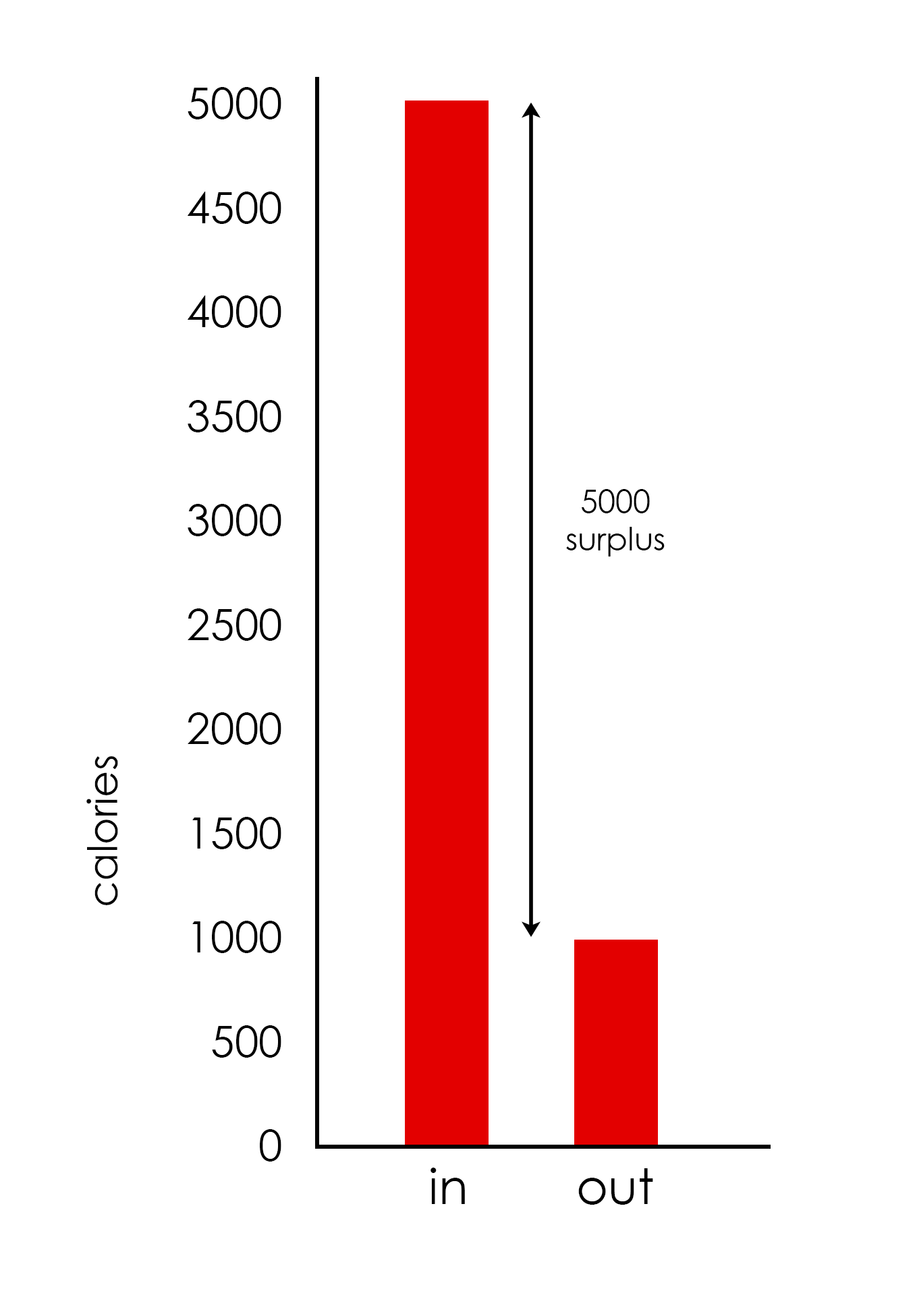
They had literally flipped their charts!
They went from burning 5000 calories a day and eating 1000 calories a day, to binging on 5000 calories a day due to their increased food addiction, whilst only burning 1000 calories a day due to their slowed metabolism and inability to maintain the exercise.
The result is a massive "caloric surplus", which is an excess of calories, resulting in massive REBOUND WEIGHT GAIN.
And so...
The "Eat Less, Exercise More" model of weight loss is flawed. Because it creates a caloric intake so low, and a caloric deficit so large, the body misinterprets it for famine. It therefore activates a number of defence mechanisms (slower metabolism / increased appetite and cravings) to protect the dieter from starvation.
Scientists call these defence mechanisms "persistent metabolic adaptations". And they are the reason why diets don't work, why 95% of dieters regain the weight, and 40% actually end up fatter longer term.
The caloric deficit is...
a) Too large, putting the body into starvation mode, and
b) Too hard, meaning it's not sustainable long term
And this is true of other less extreme diets too!
Weight Watchers, Slimming World, Rosemary Conley and many more mainstream diets all follow this same "Eat Less, Exercise More" model of weight loss, that never lasts and almost always leads to rebound weight gain.
"Here Jenny, follow our plan that is 1200 calories a day, and go to as many exercise classes as you can each week so you burn 3000 calories a day! The weight will fall off!"
Which it does.
But the "persistent metabolic adaptations" that result from it wreck the dieter's metabolism whilst increasing their food addiction and binging...
Meaning the results NEVER LAST.
Worse than that, they end up FATTER LONGER TERM.
The take home message?
"Eat Less, Exercise More" is dump.
It is a big, smelly, steamy, stinky dump 💩
The sooner our NHS and medical professionals stop recommending it, the sooner we can start reversing the obesity epidemic. Right now... believe it or not... "Eat Less, Exercise More" is the cause of obesity, not the cure.
It is starving our bodies...
Triggering adaptations that make us better FAT STORERS, not fat burners.
__________
2. Eat More, Exercise More
So if eating less and exercising more doesn't work, what does?! Well, the good news is that there is a much healthier, much more sustainable way to lose weight.
But it means getting fit.
So if you're not into getting fit?
You better start getting into it!
Here's how it works.
"Eat More, Exercise More" is a nutrition and fitness strategy that does the exact opposite to your body as "Eat Less, Exercise More". It is like the anti-diet.
Instead of STARVING your body...
It's all about NOURISHING your body.
It involves gradually increasing your calorie intake, loading up your body with good quality nutrition, whilst also gradually increasing your calorie output (exercise), which has the wonderful effect of...
a) boosting your metabolism, and
b) reducing your appetite and cravings
The initial stage looks like this...
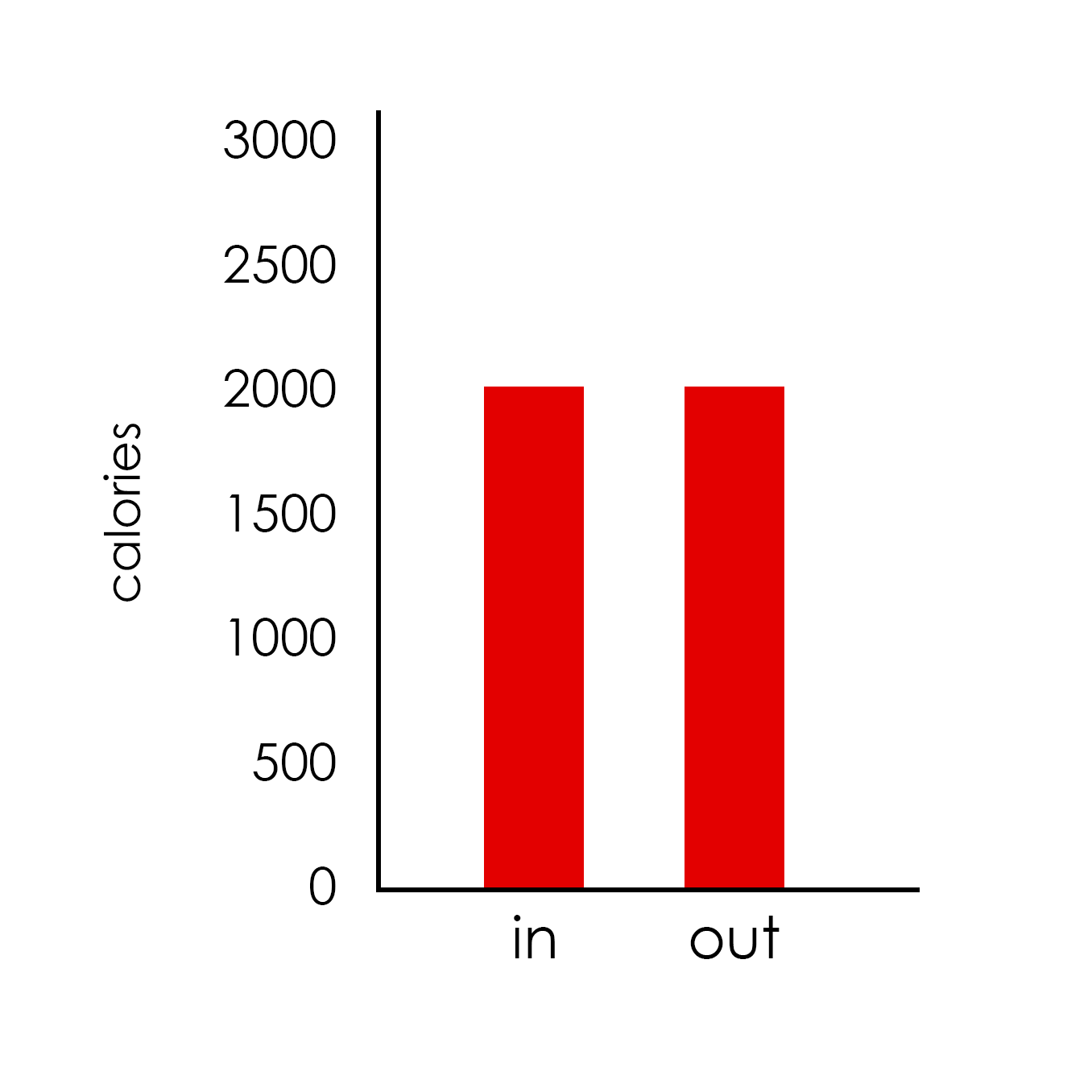
You start by matching your calorie intake to your calorie needs. You can either do this by counting calories, or learning how to listen to your appetite (aka "intuitive eating", which takes a bit of time).
So if we imagine your body burns 2000 calories a day, you would eat 2000 calories a day, favouring highly nutritious, high nutrient density WHOLE FOODS.
Because you are in "caloric balance" you would maintain weight, and you would feel full and satisfied, with very little appetite or cravings. Good news!
Next you need to gradually increase your fitness, to gradually increase the amount of calories you burn each day. You would then keep raising your calories to match that increased caloric output. In time, over many months, you would get your calorie intake / calorie burn to look something like this...
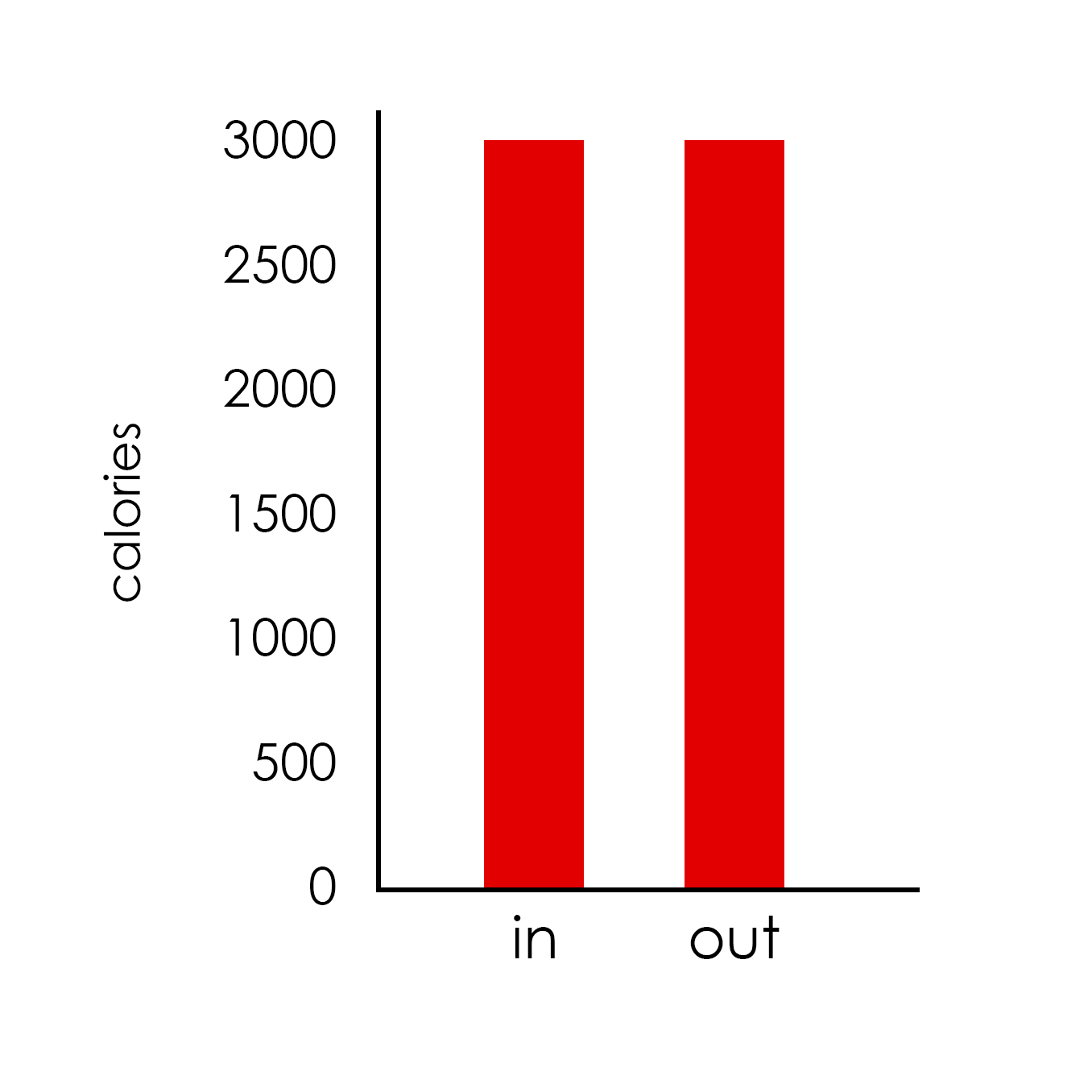 The result is a revved up metabolism that burns 3000 calories a day, whilst also matching that calorie output by eating 3000 calories a day.
The result is a revved up metabolism that burns 3000 calories a day, whilst also matching that calorie output by eating 3000 calories a day.
Your weight will remain the same, but you will experience something called "body recomposition", where your body gradually adapts as you get fitter, swapping pounds of fat for pounds of muscle, all of which revs up your metabolism even more.
And then the really cool part.
Rather than starving your body with all that "Eat Less, Exercise More" rubbish, you simply increase your exercise output a little bit more, by about 500 calories, which then creates that all important "caloric deficit" to start burning off the fat...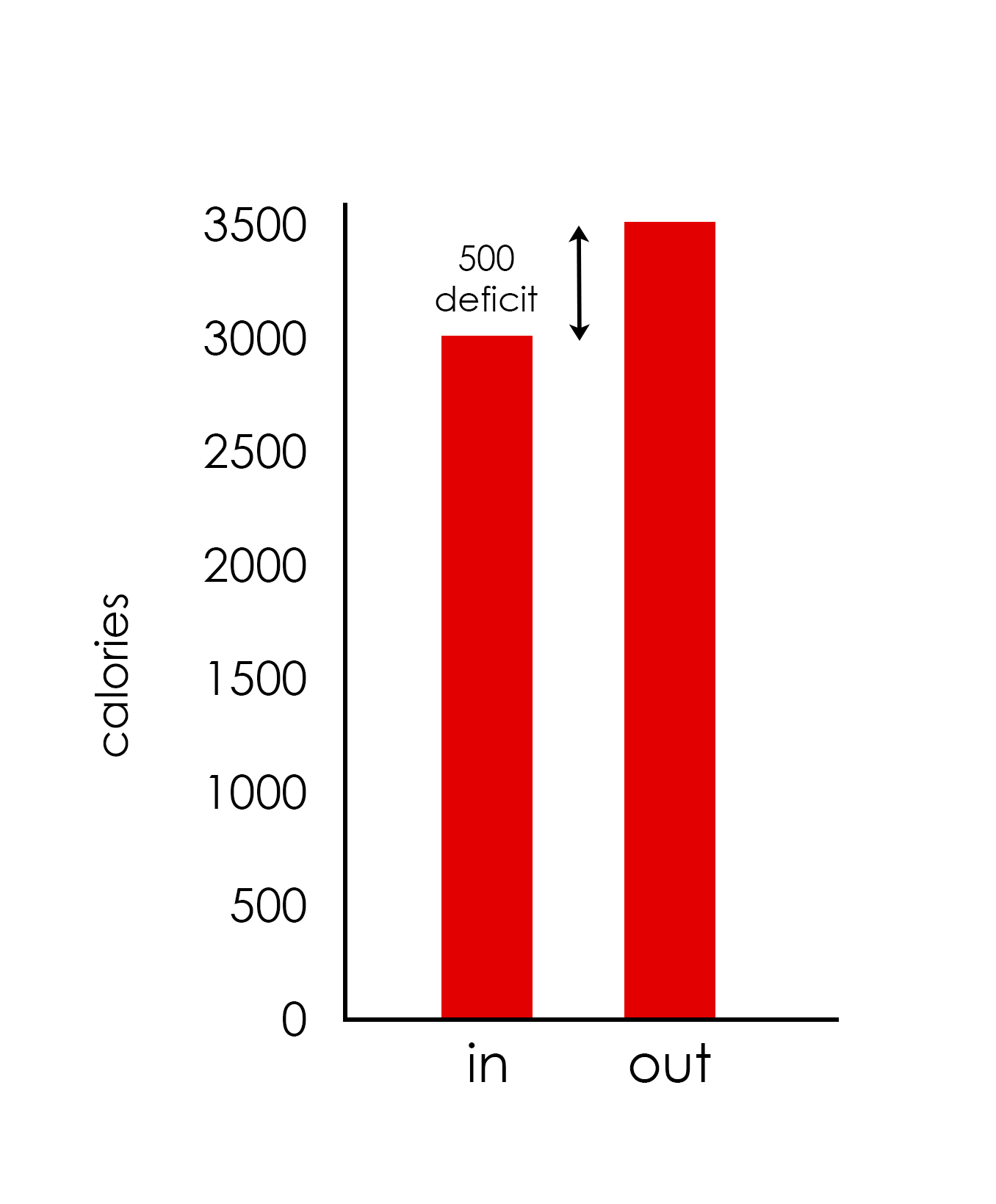
You are now in "caloric deficit", not by eating less (bad!), but by exercising more (good!).
Which means your body will start burning off those sugar and fat savings, causing you to lose weight. But because you've got a whopping 3000 calories of nutrient dense foods coming in, your muscles are well fuelled, well nourished and therefore not going to get burned off as they would with dieting.
Most importantly of all...
Your BRAIN is also well fuelled.
Your brain is not experiencing a famine.
So you are not going to experience the miserable effects of dieting, where your appetite and cravings become out of control, as your body tries to defend itself from starvation. You're eating 3000 calories a day on this approach, your body and brain is going to be more than happy, meaning you lose weight...
Without the misery of uncontrollable binging!!
___________
If you've understood this you deserve a medal!
But more importantly, you will hopefully have learned how the 5% who do maintain their weight losses long term do it through...
"Eat More, Exercise More!"
Yes, this means you need to get fit, eat a lot and exercise a lot. But I'm sure they'll tell you, as I will... getting fit, eating a lot and exercising a lot is actually great fun!!
Don't fear it. Believe in yourself.
And EMBRACE IT!
Liam
[If you'd like to learn more about how we can help, please feel free to email us for a non-judgemental conversation about your weight and nutrition.]







